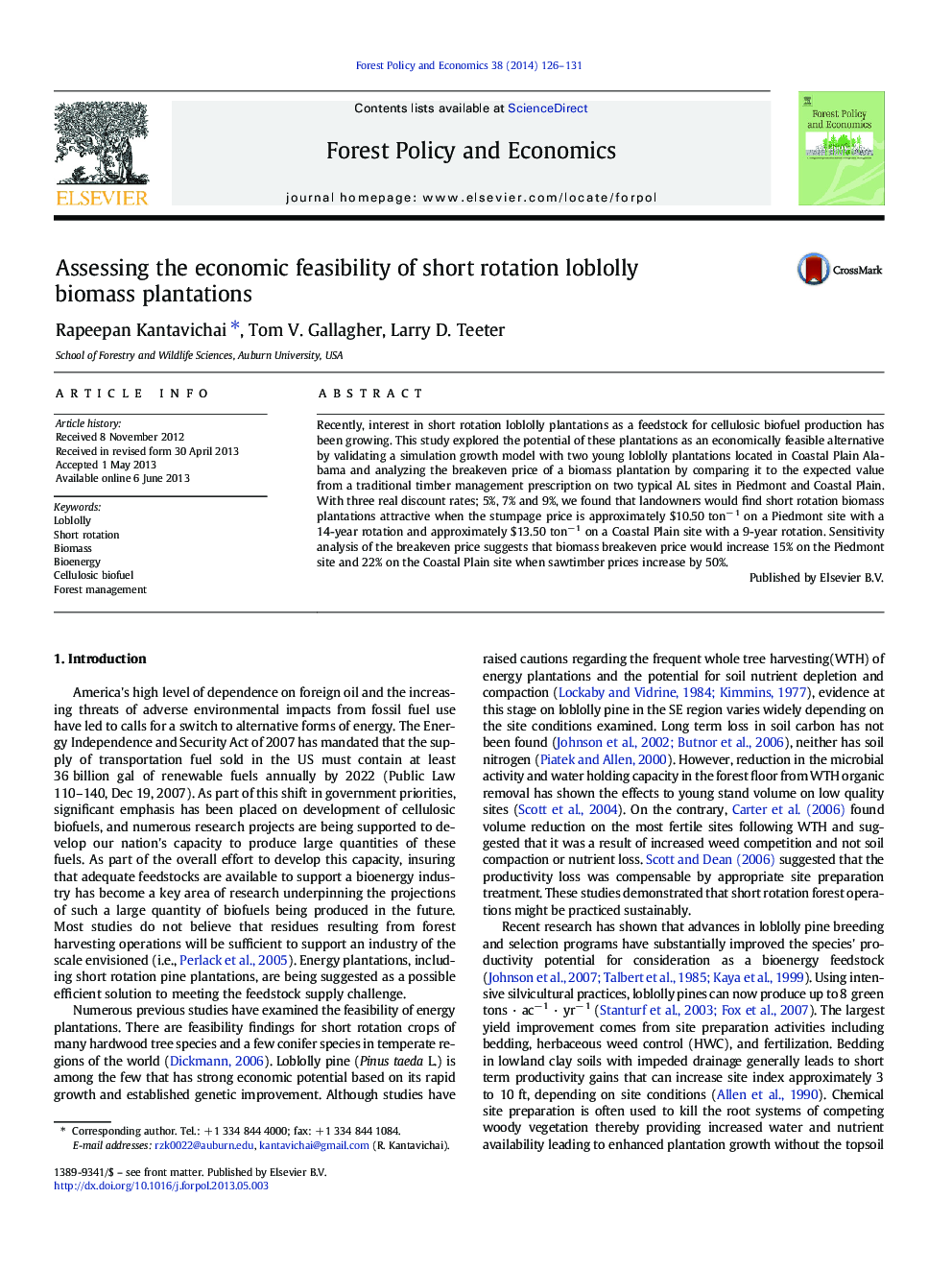| Article ID | Journal | Published Year | Pages | File Type |
|---|---|---|---|---|
| 6545025 | Forest Policy and Economics | 2014 | 6 Pages |
Abstract
Recently, interest in short rotation loblolly plantations as a feedstock for cellulosic biofuel production has been growing. This study explored the potential of these plantations as an economically feasible alternative by validating a simulation growth model with two young loblolly plantations located in Coastal Plain Alabama and analyzing the breakeven price of a biomass plantation by comparing it to the expected value from a traditional timber management prescription on two typical AL sites in Piedmont and Coastal Plain. With three real discount rates; 5%, 7% and 9%, we found that landowners would find short rotation biomass plantations attractive when the stumpage price is approximately $10.50 tonâ 1 on a Piedmont site with a 14-year rotation and approximately $13.50 tonâ 1 on a Coastal Plain site with a 9-year rotation. Sensitivity analysis of the breakeven price suggests that biomass breakeven price would increase 15% on the Piedmont site and 22% on the Coastal Plain site when sawtimber prices increase by 50%.
Related Topics
Life Sciences
Agricultural and Biological Sciences
Forestry
Authors
Rapeepan Kantavichai, Tom V. Gallagher, Larry D. Teeter,
